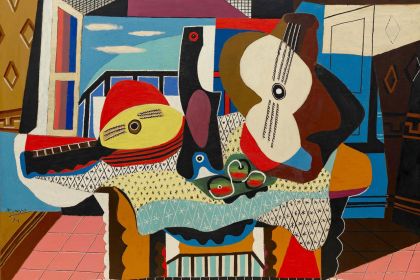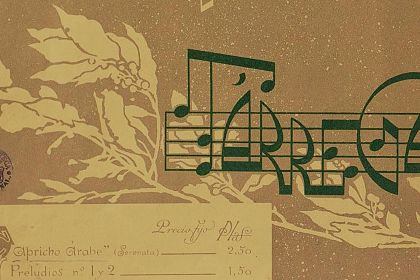Classical Guitar
4 collections of early guitar music by enigmatic Santiago de Murcia discovered on 3 Continents

Cifras Selectas de Guitarra
Little is known about the life of the late Baroque composer Santiago de Murcia whose survived collections of works contain crucial examples of early guitar music in various genres as well as theoretical aspects and helpful tips on performing techniques. The fact that four of his publications known to date have been discovered in Mexico, Chile, and Spain create further confusion for biography researchers regarding the composer's life.
The importance of Murcia's output which covered the fashion trends of his time in Spain, Italy, and France is proven by the steady interest of many prominent guitarists of the 20th century, including Andrés Segovia and Julian Bream.
It is known from the municipal archives that Santiago de Murcia was born in Madrid in 1673. In addition, one of his publications refers to his service as a guitar teacher at the court of the Spanish Queen Maria Luisa of Savoy.
Despite numerous speculations, researchers doubt the composer's travels to the New World, instead suggesting that his works were taken overseas by publishers for commercial purposes. The archives also contain the undisputed date of death of the composer which occured in Madrid in 1739.
Listen to Santiago de Murcia's Prelude and Allegro performed by Andrés Segovia:
In 1714, the earliest known source of Murcia's music was published under the title Resumen de acompañar la parte con la guitarra. It included the detailed treatise dedicated to the Baroque guitar and art of accompanying a figured bass. Aside from the treatise itself, the book featured six sets of variations, three suites and a large number of French ballroom dances in guitar tablature.
Given that several copies of Resumen de acompañar have been preserved in various Spanish libraries, it would be safe to presume that the publication was in high demand at the time. In any case, it was the first known Spanish source to organize guitar repertory in such a systematic manner.
The Baroque guitar quite naturally differs from the modern classical guitar—both in shape and in the number of strings—however, it is more than possible to hear Murcia's music performed as it was intended to be, due to the reinvigorated interest in the original instrument that has been growing since the mid-20th century.
Watch Julian Bream play Prelude and Allegro on the Baroque guitar:
Murcia's second publication, dated 1732, was a manuscript entitled Passacalles y obras de guitarra discovered in Mexico at the end of the 19th century. The anthology combines dances written by Murcia himself with works of other famous composers including the sonatas of Arcangelo Corelli transcribed for the Baroque guitar.
Another Mexican manuscript attributed to Murcia was purchased in Leon in the province of Guanajuato by musicologist Gabriel Saldivar in 1943. The compilation, now called Códice Saldívar no. 4, had no title page and its connection with Murcia was not recognized until 1980.
Códice Saldívar contains variations on traditional Spanish dances such as jácaras and marionas mixed with French dances including fustamberg and cotillón. It also includes the three-movement sonata in Italian style for which no authorship has been established to this day. Some researches have suggested that the Códice Saldívar is the first volume of Passacalles y obras as the latter contains an annotation indicating that it was the second volume of a larger anthology.
Listen to Santiago de Murcia's Jota performed by Chatham Baroque:
The latest known Murcia's manuscript, entitled Cifras Selectas de Guitarra, was discovered by musicologist Alejandro Vera in Santiago de Chile in 2004.
The manuscript, dated 1722, contains chapters on musical theory, practical tips on tuning various string instruments, as well as recommendations on guitar chord fingering and performing technique. In addition to the theoretical sections, Cifras Selectas de Guitarra boasts 69 pieces of music—with no clear indication of authorship—most of which are dances with several suites thrown in.

Overall, all known publications of Santiago de Murcia shed little light on the composer’s life; however, being the most important source of the guitar repertoire of the Baroque era, they reveal probable roots of the practice of mixing European dance styles and the ways of music distribution through the New World.



